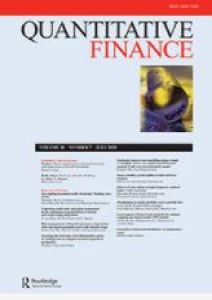

Maximizing an equity portfolio excess growth rate: a new form of smart beta strategy?
Quantitative Finance, Volume 20, 2020 - Issue 7
It has been claimed that, for dynamic investment strategies, the simple act of rebalancing a portfolio ...
Author(s):
Summary:
Quantitative Finance, Volume 20, 2020 - Issue 7
It has been claimed that, for dynamic investment strategies, the simple act of rebalancing a portfolio can be a source of additional performance, sometimes referred to as the volatility pumping effect or the diversification bonus because volatility and diversification turn out to be key drivers of the portfolio performance. Stochastic portfolio theory suggests that the portfolio excess growth rate, defined as the difference between the portfolio expected growth rate and the weighted-average expected growth rate of the assets in the portfolio, is an important component of this additional performance (see Fernholz [Stochastic Portfolio Theory, 2002 (Springer)]). In this context, one might wonder whether maximizing a portfolio excess growth rate would lead to an improvement in the portfolio performance or risk-adjusted performance. This paper provides a thorough empirical analysis of the maximization of an equity portfolio excess growth rate in a portfolio construction context for individual stocks. In out-of-sample empirical tests conducted on individual stocks from 4 different regions (US, UK, Eurozone and Japan), we find that portfolios that maximize the excess growth rate are characterized by a strong negative exposure to the low volatility factor and a higher than 1 exposure to the market factor, implying that such portfolios are attractive alternatives to competing smart portfolios in markets where the low volatility anomaly does not hold (e.g. in the UK, or in rising interest rate scenarios) or in bull market environments.
| Type : | Academic Publication |
|---|---|
| Date : | 13/07/2020 |

